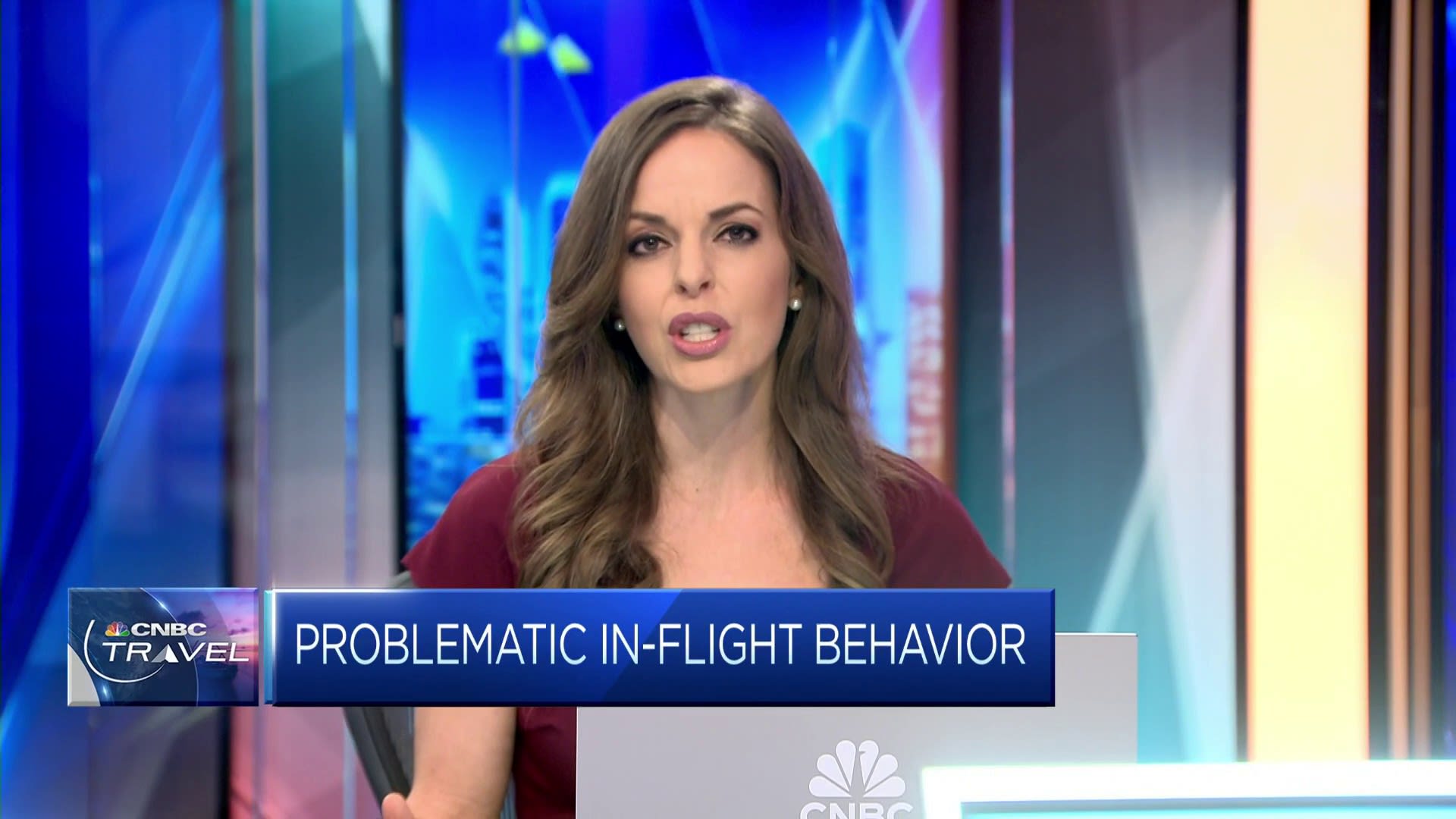A new report has an ominous warning for air travelers.
“No matter what you do on a plane, you’re probably annoying another passenger,” it states.
The report, published Thursday by the data intelligence company Morning Consult, examined 12 types of behavior on flights, finding that most travelers (>50%) were bothered by all but one.
“When the unwritten rules of airlines etiquette are broached, it can lead to conflict,” writes Lindsey Roeschke, a travel and hospitality analyst at Morning Consult who authored the report.
Nearly one in five respondents said concerns about other passengers’ behavior may deter them from taking a trip.
The most off-putting behaviors
According to the report, the most aggravating in-flight behavior is the invasion of personal space — be it encroaching on an armrest, leg room area or crossing the invisible boundary that separates passenger seats. Some 77% of people in the survey said they were “bothered” by it, with 51% saying they were “very bothered.”
Source: Morning Consult
In second place are unhygienic behaviors, such as clipping fingernails or taking off shoes, according to the survey of more than 2,200 Americans. However, not everyone objects to removing shoes on flights, with less than half of people in Asia (49%) and just over a third of those in the United Arab Emirates (38%) deeming the practice unacceptable in a YouGov survey published in April.
Passengers who are visibly sick rank third on the list, as Covid-19 and other contagious illnesses can affect passengers long after a flight ends.
Rounding out the top five of irritating behaviors is listening to devices without headphones, followed by visible intoxication.
Getting on and off the plane
People who try to exit the plane before the rows ahead of them irritate more than two-thirds (67%) of American travelers, while those who block the aisle while boarding are nearly as reviled (66%). Getting up to retrieve items from the overhead bin while passengers are still boarding, counts here too.

Exiting has several other unspoken rules, including refraining from edging your way into the aisle too early and retrieving your bag prematurely (“yanking your bag out of the overhead bin while people are still waiting in the aisle is a surefire way to make yourself a menace”), according to CheapAir.com.
Passengers wearing backpacks can wear them on frontward when getting on and off the plane to prevent accidentally hitting seated people in the face — an occurrence so common that some flyers say it’s reason enough to book a window seat.
Reclining seats and crying babies
Though it’s No. 9 on the list, 62% of American travelers said they are bothered by passengers who recline their seats on daytime flights of short to medium length.
What was once a common practice has morphed into a hot-button issue, with newer rules of etiquette deeming seat reclining a flying faux pas in almost all circumstances — an assertion with little consensus among flyers.
New York, United States of America – February 23: A woman with long legs sitting on her seat in economy class in an aircraft on February 23, 2016 in Berlin, Germany. (Photo by Thomas Trutschel/Photothek via Getty Images)
Thomas Trutschel | Photothek | Getty Images
While the issue continues to flare up on flights — including a recent viral video in which a woman repeatedly yells “I’m allowed to put my seat back!” — current advice implores passengers to ask or alert the person behind them before reclining.
The once-quintessential flying irritant — a bawling baby — comes in at No. 10 on the list. The report notes that most passengers are forgiving of crying infants and misbehaving kids when parents are trying their best to calm the children down.
Still, some 57% of respondents expressed interest in flying in a child-free section of a plane, if one existed.
Irritability and passenger age
Morning Consult’s report also showed that irritability on airplanes increased with age, with baby boomers showing higher levels of annoyance nearly across the board.
Source: Morning Consult
Gen Zs — who are currently about 11 to 26 years old — were the least bothered by every measured behavior but one, leading Roeschke to conclude: “Cross your fingers for a Gen Z seatmate, as they’re less bothered by most behaviors. But if you want to switch seats, find a Gen Xer.”
The biggest gap between the generations were views toward intoxicated people, who irritated 83% of boomers but only 55% of Gen Zs, followed by visibly sick passengers, potentially highlighting the health risks that diseases like Covid-19 pose to older people.
Overhead bins can be a source of tension on flights, from what passengers place in them, to how quickly they store and retrieve their items.
Sandy Huffaker | Corbis News | Getty Images
The report surmised differences in irritability could be because Gen Zs have spent far less time on places.
But also: “Perhaps it’s [also] because their relatively limited life experience hasn’t left them bitter and cranky yet,” it said.
Or perhaps it’s because baby boomers have memories of what once was — the only generation of the four in the survey that flew during the “Golden age of travel.”
Unruly passengers
The number of reported unruly passenger incidents in the United States has rapidly dropped by more than 80% from record highs in early 2021, according to the data from the Federal Aviation Administration. That year, nearly 6,000 unruly passenger reports were lodged — mostly related to mask mandates — much higher than the 1,736 reports lodged as of Oct. 29, 2023.
In the past year, the number of reported unruly passengers incidents has been about two for every 10,000 flights, according to the FAA.
However, that’s still considerably higher than before the pandemic — which saw 1,161 reports in 2019 and only 544 in 2017 — a phenomenon that is perplexing industry insiders.
Yet, this data doesn’t reflect the in-flight incidents that don’t reach the level of a “report.”
“The public does not hear about the 99% of would-be incidents that are resolved by flight attendants without event,” Association of Flight Attendants President Sara Nelson told NBC News via email. “We deescalate conflict as aviation’s first responders on nearly every flight.”
Data from the International Air Transport Association shows unruly incidents are rising, rather than retreating. An IATA report published in June estimated one unruly incident for every 568 flights in 2022, up from one in every 835 flights in 2021.
Incidents commonly involve non-compliance, verbal abuse and intoxication, with the most common forms of non-compliance involving smoking or vaping onboard, seatbelt issues and exceeding carry-on baggage allowances, according to IATA’s report.
Physical violence — occurring once every 17,200 flights — is also rising, according to the IATA.
This article was originally published on CNBC

